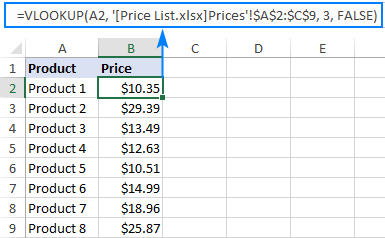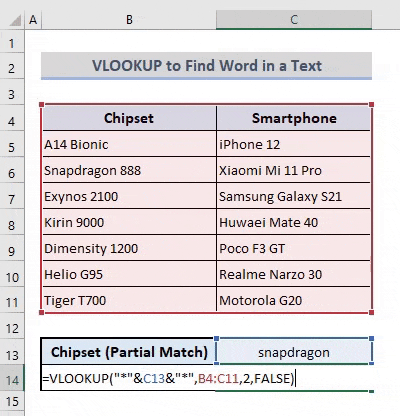

- #How to use vlookup in excel to separate text in a cell how to
- #How to use vlookup in excel to separate text in a cell free
You can use a named range or a table, and you can use names in the argument instead of cell references. Creating an Excel Dashboard in 5 Minutes. That is Using multiple columns of SUMIF is not allowed in Excel. Details: Using VLOOKUP and SUMIF together. For example, we could use VLOOKUP to populate column D shown below. Sum_range should be the same size and shape as range.If it isn't, performance may suffer, and the formula will sum a range of. If the sum_range argument is omitted, Excel adds the cells that are specified in the range argument (the same cells to which the criteria is applied). In most situations, the combination of SUM and VLOOKUP functions in Excel is useful when calculating the total of matching values in multiple columns. Step 2: Use the VLOOKUP in a SUMIF, as shown below: Step 1: Use SUMIFS to get the ID of the specified employee: Step 2: Use the SUMIFS within a VLOOKUP to find an email address based on the employee ID, as shown below: How. The MATCH () Formula - Returns the row number of a match to a given argument. Beside above, how can we use Vlookup in Excel? For that, you need a lookup function. For example, if you want to look up data in cell F3, your lookup value will be in the third row of the spreadsheet. Vlookup across multiple worksheets and sum results with formula. This is because the VLOOKUP formula has been written to return the value from the second column, as you can see in the formula for F2. Here is what I am trying to accomplish: Column A Column A Column B Column C Column D Column E Column F. Use that lookup table in Sumif using Vlookup. Step 2: Use the VLOOKUP in a SUMIF, as shown below: Step 1: Use SUMIFS to get the ID of the specified employee: Step 2: Use the SUMIFS within a VLOOKUP to find an email address based on the employee ID, as shown below: Sum_range - Optional, this is the range of cells to sum together. Combining the SUMIF and VLOOKUP Functions Understand each aspect of the VLOOKUP formula. In the above figure, we have a list of employee ID, Employee Name and Employee basic pay. XLOOKUP and SUMIFS can be applied rather easily, whereas the INDEX/MATCH combination is - at least for beginners - more difficult. First, please list all of the sheet names that you want to sum, and then create a range name for them, see screenshot: 2. Google Sheet will automatically add the open parenthesis and wait for the range. Click the cell where you want the VLOOKUP formula to be calculated.
#How to use vlookup in excel to separate text in a cell free
Use the tab titled SUMIF in the free example workbook for this section of the tutorial.

In the video example we create a wide format table on the right based on the long format table on the left. As you can see there, we can get our number or sum of numbers according to multiple lookup criteria. And both formulas using MATCH are returning the correct default result of #N/A. For our scenario above, we can use SUM to add all items sold. We can choose multiple columns from the selected table from where we want to Sum the values. That sounds boring, but SUMPRODUCT is an incredibly versatile function to use counting and sum like COUNTIFS or SUMIFS but with more flexibility.
#How to use vlookup in excel to separate text in a cell how to
In this accelerated training, you'll learn how to use formulas to manipulate text, work with dates and times, lookup values with VLOOKUP and INDEX & MATCH, count and sum with criteria, dynamically rank values, and create dynamic ranges. The SUMIF function is an extension of the existing SUM and, like the original, can be pretty simple to use.

The cell range also needs to include the return value you want to find. XLOOKUP, VLOOKUP or INDEX/MATCH? Big Lookup Functions Guide! Modified 6 years, 11 months ago. Excel has a range of functions that you can use to achieve this including VLOOKUP() and HLOOKUP() and the more flexible - but slightly more complicated -combination of INDEX() and MATCH(). The VLOOKUP function counts the first column as 1, but our MATCH function starts at column B, so it is necessary to add 1 to the column number for the VLOOKUP to return the value from the correct column. = VLOOKUP(P3,B3:N6,FALSE) This will produce the array result: 1. How to use VLOOKUP and SUMIF Function in Excel (2018. Blue is the Indexed Array, Green is the Row# (which has a faulty match formula using 2D array), Red is the Column #.

The first column in the cell range must contain the lookup_value.


 0 kommentar(er)
0 kommentar(er)
